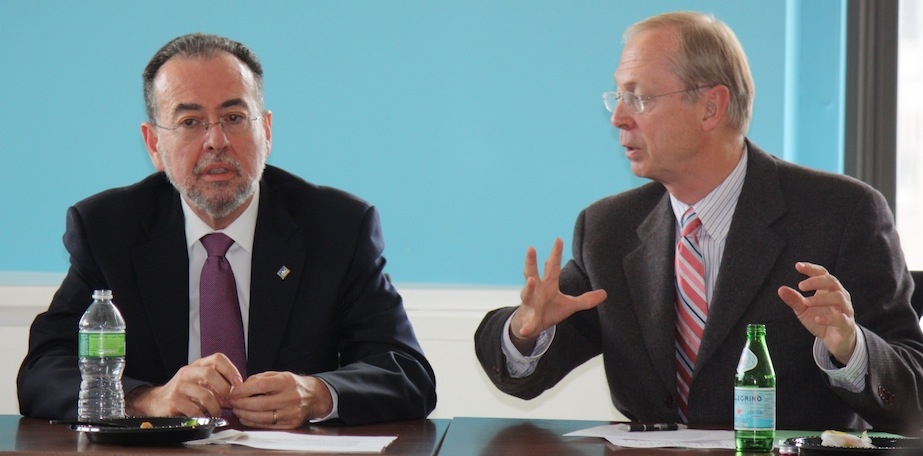Date
June 16, 2010
Public hospital systems are an essential part of New York State’s health care safety net, providing an array of services—from trauma and emergency care to mental health and substance use services—to hundreds of thousands of uninsured patients, including undocumented immigrants. HHC currently provides outpatient services to 5 million New Yorkers, including 50% of the City’s uninsured, and delivers approximately one of every five babies born in New York City. NuHealth operates a 1,200-bed health care system across three facilities on Long Island.
Both HHC and NuHealth are supportive of health care reform efforts and expanded insurance coverage. Reform will expand insurance coverage to many of New York’s 2.7 million uninsured who currently receive care from safety net providers.
They also acknowledge that reform presents challenges. Aviles and Gianelli laid out the fiscal and structural issues their systems face with the passage of health reform and deep budget cuts, tying their specific issues into a broader conversation about the uncertain financial future of safety net providers in New York State. For example:
- Health reform means expanded health insurance coverage and an increased demand for primary care. To meet this demand, public hospitals will need to strengthen their supply of primary care providers and build more formal relationships with physician practices.
- Increased access to primary and preventive care, along with pressure to reduce costs, will result in lower demand for inpatient care and higher demand for outpatient services. Public health care institutions must be nimble and restructure themselves as truly integrated care systems providing and coordinating the full range of services.
- Historically, public hospital systems like HHC and NuHealth have benefited from disproportionate share hospital (DSH) funding to offset the cost of providing care to a disproportionate number of patients without health insurance, and to compensate for Medicaid underpayments. The Federal health reform law reduces DSH payments, given that many more people will have coverage under the law, presumably reducing the proportion of uninsured patients receiving care. However, as Mr. Aviles pointed out, “that calculus doesn’t work in places like New York,” where a large percentage of uninsured patients are undocumented immigrants who are ineligible for coverage expansions under the new health reform law.
- Both HHC and NuHealth estimate that 60–70% of their uninsured patients are undocumented immigrants. HHC expects to see an annual loss of $270 million as a result of reduced DSH payments.
- One fundamental issue cited by both speakers is the problem with the Medicaid reimbursement system across the country. Public hospital systems rely on Medicaid payments to cover patient services and operational costs (HHC, for example, receives 70% of its funding from Medicaid). Particularly for public institutions caring for the sickest and most expensive patients, however, Medicaid payments are simply insufficient to cover costs.
The confluence of budget cuts and health reform clearly creates challenges for New York State’s public hospitals, but leaders like Aviles and Gianelli are thinking creatively about how to remain viable, and there are some opportunities. They note that there is some flexibility with how DSH reductions are administered, and that the most significant cuts to DSH funding will not take effect until 2017. The health reform law also includes support for demonstration projects in five states that focus on a global payment approach for Medicaid, a promising step toward needed payment reform.
In the meantime, public health care systems are working to revamp their own business models and delivery systems, forging strong connections with health plans to secure competitive commercial insurance rates and enhancing their operating systems. These changes are critical to maintaining the State’s public hospitals as an essential health care safety net to the newly insured and those left behind by health reform.

